What shots will you remember after a round at Spyglass Hill? Let’s ask a couple of Golf Digest Course Raters:
“A must-play for any true golfer who visits the Monterey Peninsula. Spyglass has 18 tremendous golf holes that, hole for hole, could be argued to be as good as Pebble.”
Our Facebook fans agreed. When we asked you to pick the Pebble Beach Resorts Dream 18, it came back a split decision — nine holes from Pebble Beach Golf Links, and nine from Spyglass Hill. Added another rater:
“The first five holes are absolutely amazing. Spyglass has one of the best opening holes in golf. And the short par-4 fourth hole is world-class.”
Of course, there is more to Spyglass Hill than the first five holes, as Robert Trent Jones Sr. points out:
“Spyglass Hill demands an unusual mixture of seaside, links-type holes and a parkland atmosphere. The first five holes, starting from deep in the woods and heading immediately to the sea, demand target golf through sandy wastes, deliberately reminiscent of Pine Valley, but with water in the background and buffeted by the ocean winds. The rest of the course winds through towering Monterey Pines and cypress in the Del Monte Forest, and is deliberately reminiscent of Augusta National.”
With that in mind, here’s a tour of the most memorable shots you will face at Spyglass Hill:
THIRD SHOT ON NO. 1 (595 YARDS, PAR-5)
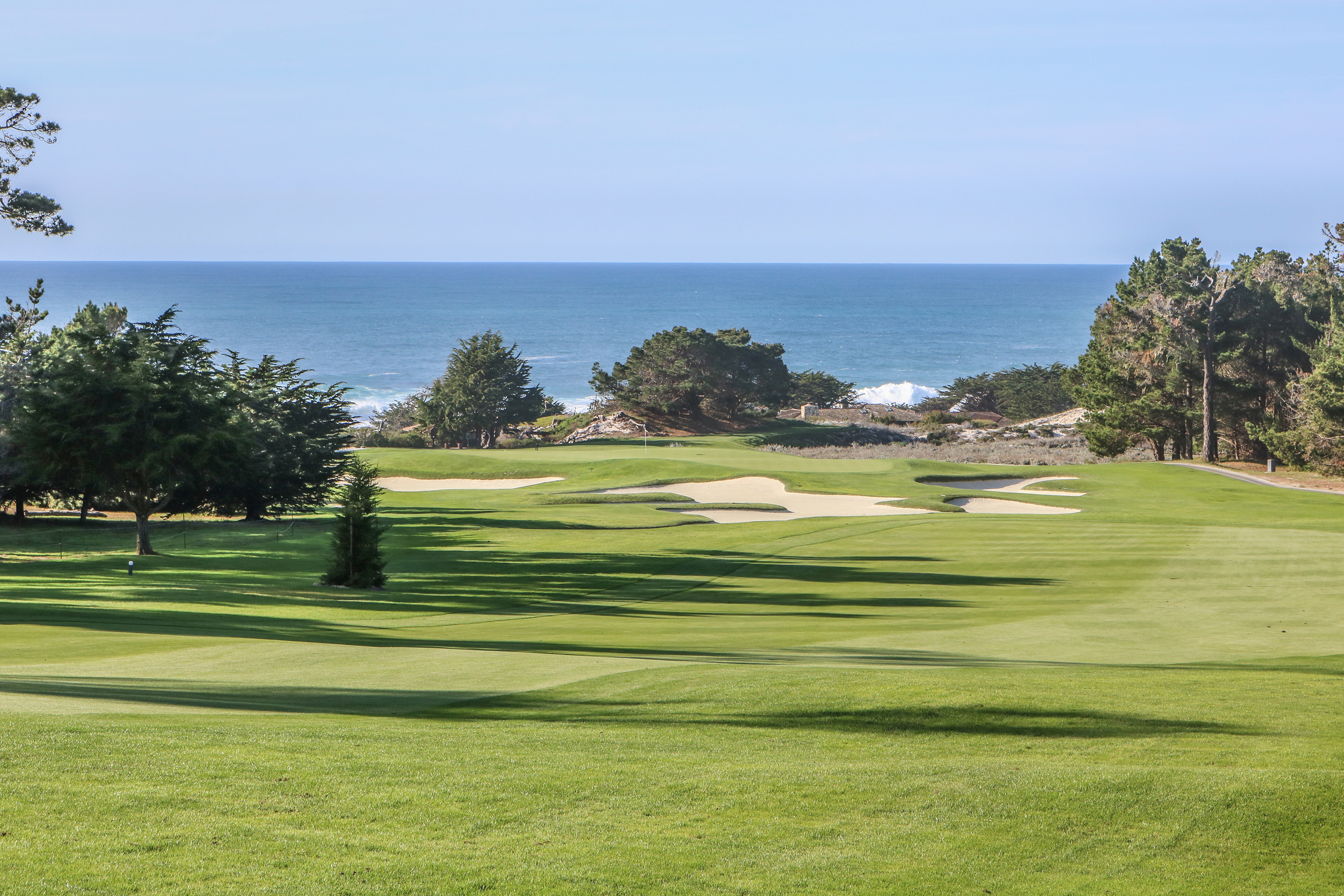
PGA.com says it’s one of the best opening holes in golf. GolfAdvisor.com believes it’s one of the scariest. Either way, it’s one of the most memorable ways you can start a round.
After threading a chute of Monterey Pines off the tee, the hole banks downhill and hard left to an incredible reveal of the endless Pacific Ocean. A layup off a hanging lie can get you as close as 75 yards to a green surrounded by bunkering — earning the hole the nickname “Treasure Island”. Then you face an exacting approach to a wavy two-tiered green, often into a fresh ocean breeze.
TEE SHOT ON NO. 3 (172 YARDS, PAR-3)
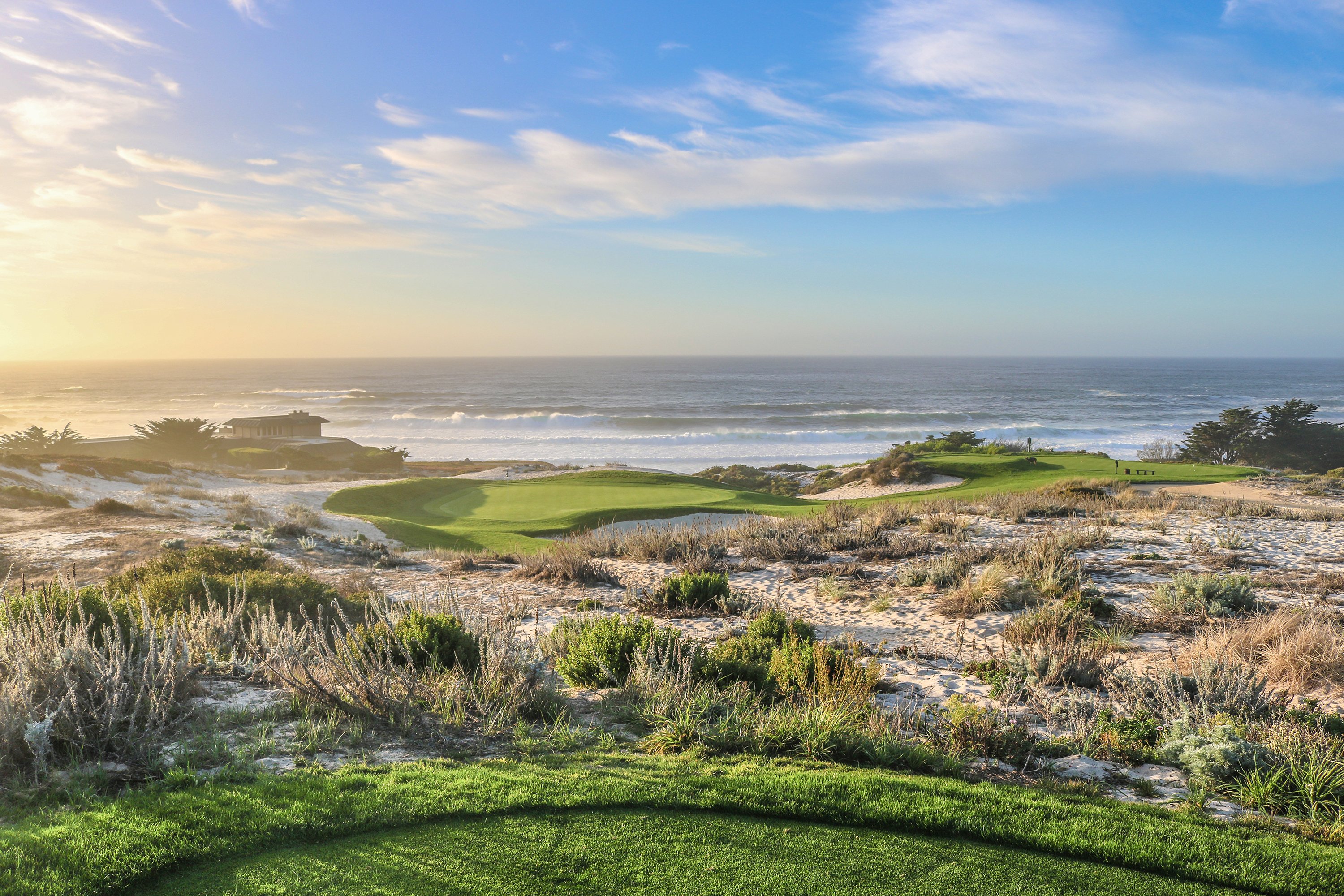
Here you reap the benefits of that blind second shot on No. 2. The view on the third tee box is so unobstructed, you can see the horizon bend with the curvature of the earth. This spectacular hole can be a simple wedge, or an impossible mid-iron you are trying to keep under the wind, despite teeing off above it. To turn this hole into a true postage stamp, try to hit this 26-pace-deep green from the recently added back tee, which was installed a good hike up the sand dune, measuring 172 yards.
SECOND SHOT ON NO. 4 (370 YARDS, PAR-4)
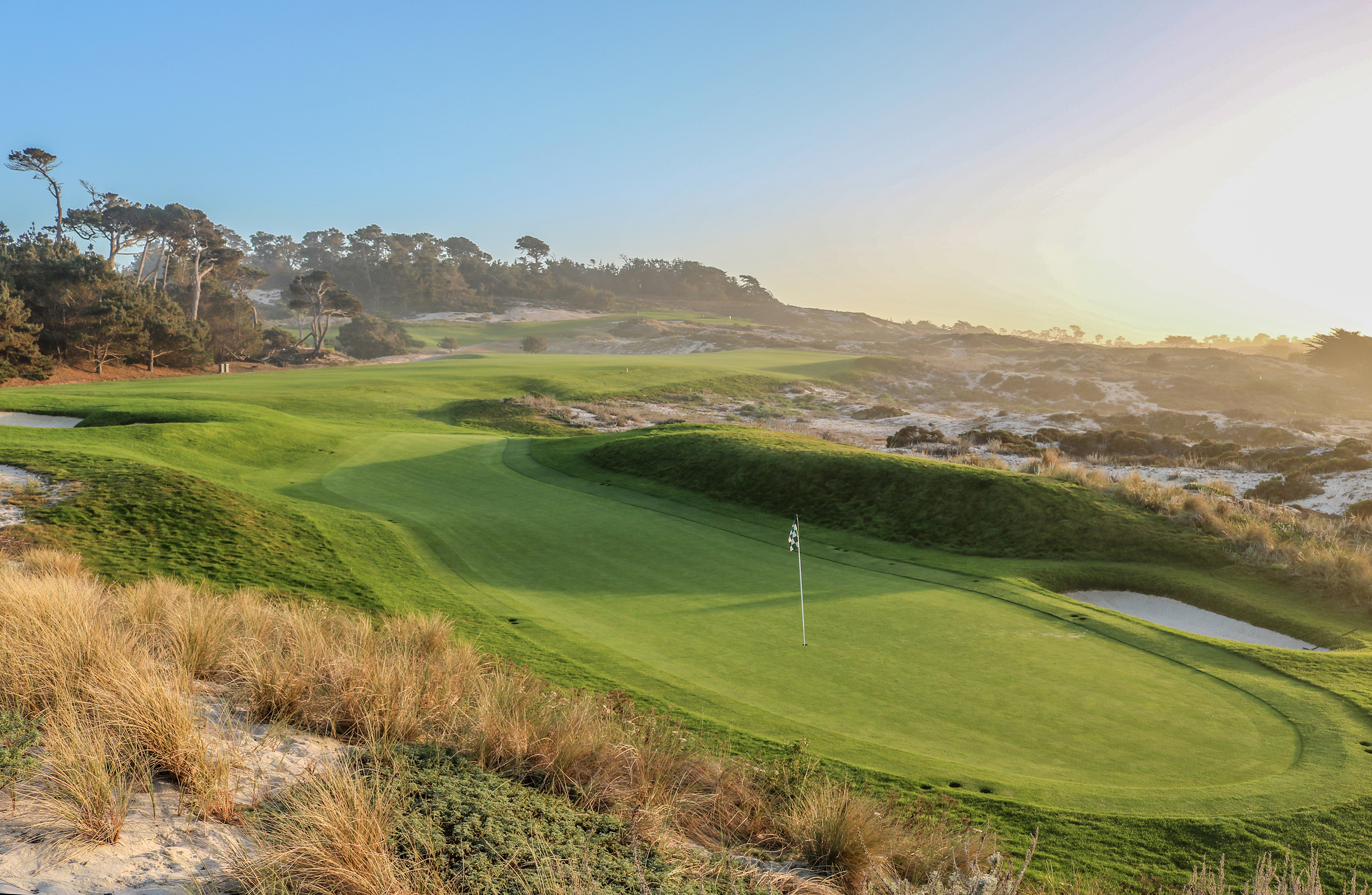
This slithering green snakes between two sand dunes for 55 yards, and is barely 30 feet wide at its most forgiving. As Golf Academy Director of Instruction Laird Small says, you need courage to hit this shot. A properly placed tee ball should leave you less than 150 yards, but there is simply nowhere to miss your second shot into this playground slide-like green that you need to see (and play) to believe.
TEE SHOT ON NO. 12 (178 YARDS, PAR-3)
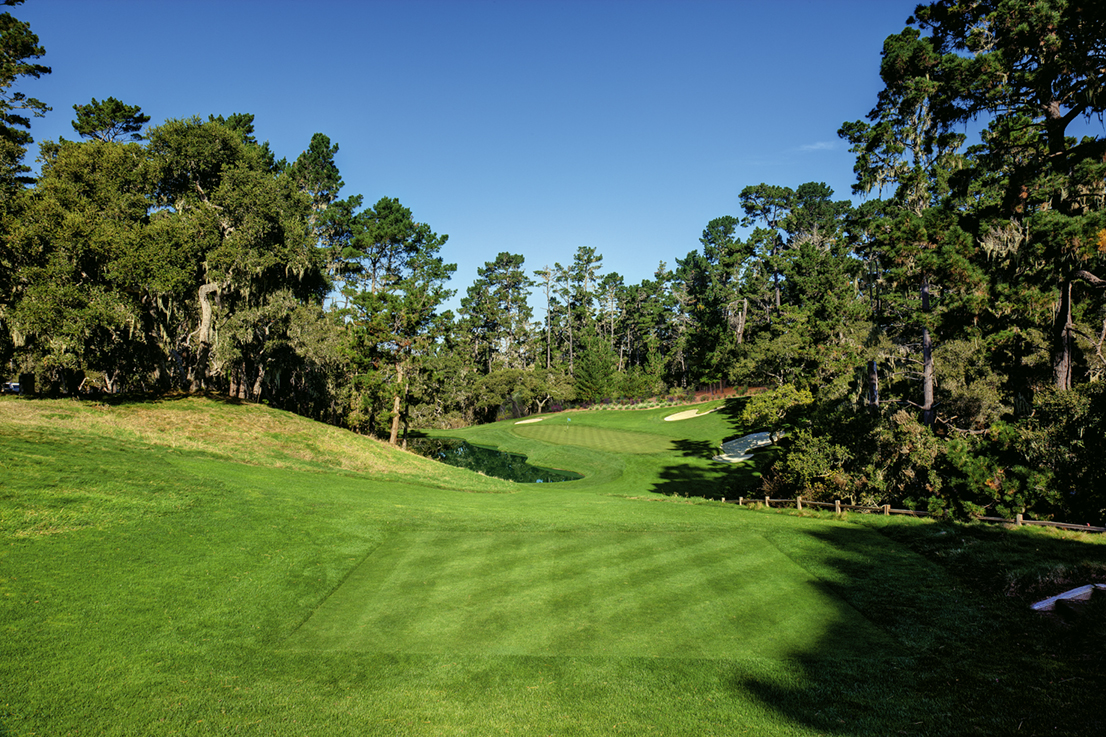
Robert Trent Jones Sr. built Spyglass Hill after his work on the 11th and 16th holes at Augusta National. Golf.com made the connection between Augusta National and this lake-fronted hole at Spyglass Hill:
Visual and strategic drama merge harmoniously throughout Augusta National’s back nine, reaching a crescendo at the par-3 16th. The hole wasn’t in the original design. Robert Trent Jones Sr. created it in 1947, and the hole soon became a favorite of President Dwight D. Eisenhower, who once committed it to canvas with his paintbrush.
Trent Jones Sr. later authored a wooded wonder on No. 12 at Spyglass, where the shot demands are similar: Aim at the water-guarded left side at your peril, but bail out too far right and face a scary downhill recovery with a pond lurking beyond.
It’s a thrilling downhill shot to judge, with the ocean breeze invisibly lurking above the trees. (Caddie tip: check out which way the moss in the trees is pointing to gauge the wind.)
THIRD SHOT ON NO. 14 (560 YARDS, PAR-5)
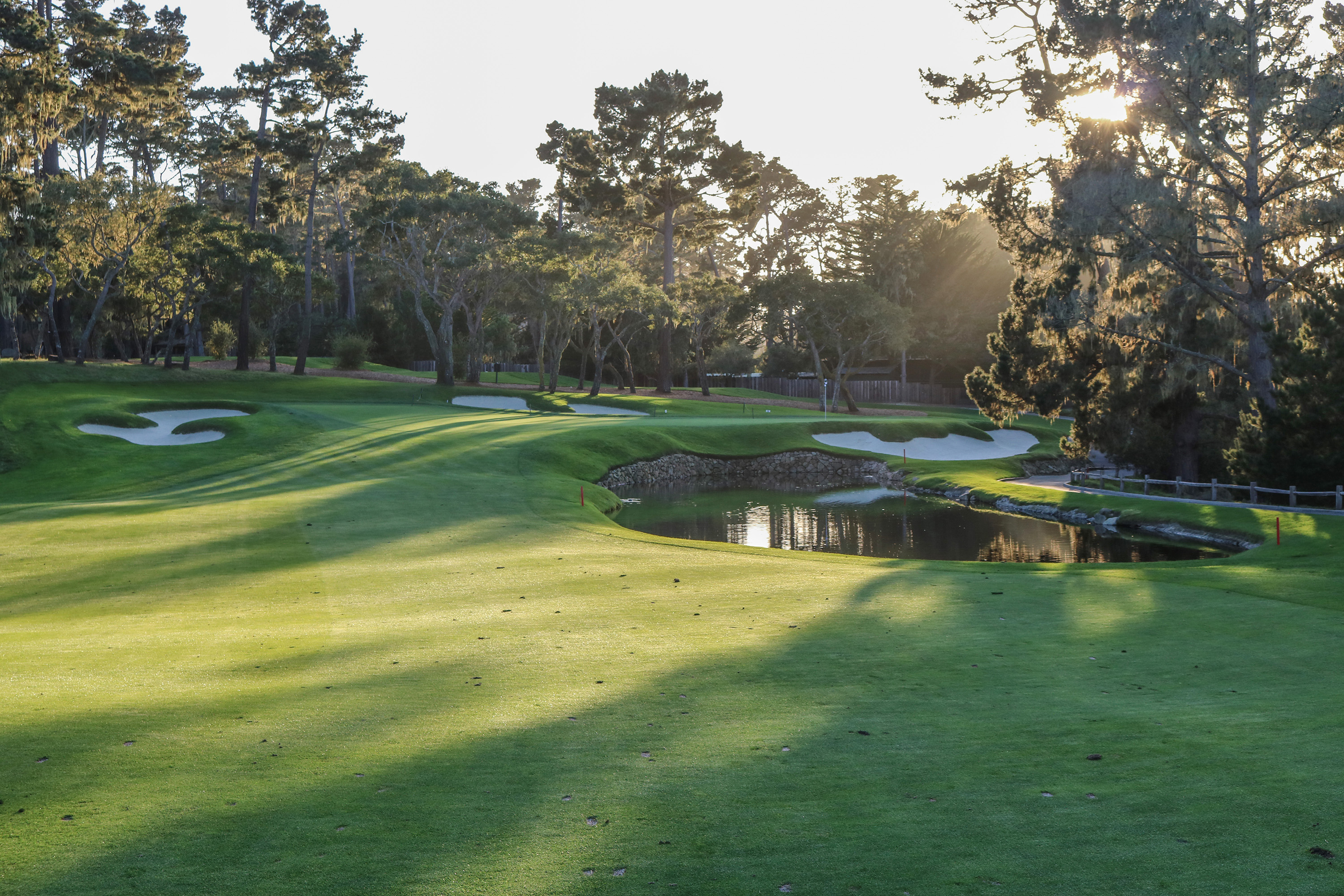
The strategy for this serene setting is entirely dependent on the hole location — but they’re all fun. The right finger of green is deceptively skinny for an approach that must carry a 60-yard long lake. A smartly played wedge off a backboard to the left can help you reach a front pin, but any miss right will plop into the middle of the lake. And there’s even an elevated pad on the top-left corner of the green that’s a tiny 13 paces deep, ensuring that just about any approach shot into No. 14 will be challenging.
What’s your favorite shot to hit at Spyglass Hill?